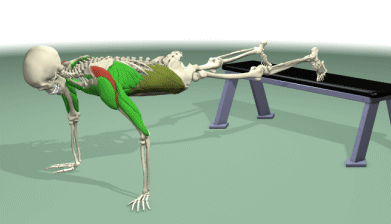




THE FITNESS
DIGEST.
Looking for a way to add variety to your exercise plan while taking your fitness to the next level? High-intensity interval training (HIIT) is a cardiorespiratory training technique that alternates brief speed and recovery intervals to increase the overall intensity of your workout. HIIT is used by athletes and everyday exercise enthusiasts to reach performance goals and enhance fitness and well-being.
How does it work?
Most endurance workouts, such as walking, running, or stair-climbing—are performed at a moderate intensity, or an exertion level of 5-6 on a scale of 0-10. High-intensity intervals are done at an exertion level of 7 or higher, and are typically sustained for 30 seconds to 3 minutes, although they can be as short as 8-10 seconds or as long as 5 minutes; the higher the intensity, the shorter the speed interval. Recovery intervals are equal to or longer than the speed intervals.
High-intensity interval training is done at a submaximal level; around 80-95% of maximal aerobic capacity. Sprint interval training (SIT) is a type of high-intensity interval training that pushes beyond this level to 100% or more of maximal aerobic capacity, or an exertion level of 10.
What are the benefits of HIIT?
The payoffs of pushing yourself with HIIT are plentiful, and include:
· -Significantly increased aerobic and anaerobic fitness
· - Decreased fasting insulin and increased insulin sensitivity
· - Reduced abdominal and subcutaneous (just under the skin) fat
The surprising thing about HIIT is that it involves such a small total amount of exercise. By including HIIT in your exercise plan, you can realize remarkable results in a short amount of time, which is good news for busy people.
Is HIIT safe?
High-intensity exercise of any type brings with it a higher risk of musculoskeletal injury and cardiac events. But along with healthy subjects, HIIT has been studied as a training method for people with heart disease and congestive heart failure. Under clinical supervision, subjects were able to tolerate high-intensity intervals without negative effects. Most importantly, they experienced bigger improvements in cardiovascular function compared to those undergoing continuous moderate-intensity training.
The bottom line? HIIT may or may not be safe for you. Check with your health care provider before adding it to your exercise plan.
How can I get started with HIIT?
Choose an aerobic exercise—like stationary bicycling. Warm up for 5 minutes, and perform just a few alternating speed and recovery intervals; 3-4 of each should be plenty and will give you a feel for it; finish with an easy cool down.
HIIT protocols vary widely. There’s no one best single way to structure them. Experiment with shorter and longer speed and recovery intervals to find what works best for you.
Gradually work up to 8-10 or more speed intervals, depending on your fitness goals. Keep in mind that the most common mistake made with interval training is making the recovery intervals too short.
Perform HIIT workouts 1-2 times a week at most to reduce your risk of injury. This high-intensity training method is best used periodically for up to 6 weeks or so to enhance regular training rather than as a year-round fitness strategy.
For best results, work with a certified fitness professional to create a personalized HIIT training plan. HIIT requires a big, sweaty effort, but if you stick with it, chances are you’ll be rewarded with impressive results.
HIIT
Physical fitness Disclaimer and Waiver of liability:
Exercises are not without their risks and the exercise programs in this website may result in injuries.Any person who undertakes these exercises does so at their own risk.To reduce the risk of injuries ,you should consult your doctor before beginning these or any other exercise programs.As with any exercise program ,if at any point during your workout you believe conditions to be unsafe or begin to feel faint or dizzy,have physical discomfort or pain, you should stop immediately and consult a physician.
Daily exercise for Working women.
Jumping Jacks. . Effective workouts.
Group exercise and its benefits.
Calf raises-free style . Push ups.
Tummy exercises. Hoola Hooping .
Fitness Motivational tips. Barbell Squauts.
The myths of spot reduction. Leg press.
Standing calf raises. Concentration curls.
Bench (Tricep) dips.. One arm dumbbell rows.
Pec deck Flye. Fr0nt dumbbell raises. Glute ham raise.
Seated leg curl . Close grip bench press .
.

Please keep comments positive and constructive.
Help the WEBSITE by reporting inappropriate comments to thefitnessdigest@gmail.com . Inappropriate comments may be reported and/or removed.